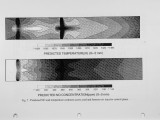| Title |
An Investigation of NO Reduction by Coal Reburning |
| Creator |
Yang, Y. B.; Gibbs, B. M.; Hampartsoumian, E. |
| Publisher |
University of Utah |
| Date |
1998 |
| Spatial Coverage |
presented at Maui, Hawaii |
| Abstract |
In this paper coal reburning for the reduction of NO emission was investigated in a 0.2MWt pilot-scale furnace. Eight bituminous coals were selected for study over a wide range of operational parameters including reburn zone residence time, reburn-fuel fraction, type of coal, furnace temperature level and primary NO concentration. Three-dimensional numerical calculations were carried out in an effort to fully understand the reburning process, the related NO-chemistry and to investigate in detail the sensitivity of the reburning process to the devolatilisation behaviour of the reburn coal and mixing rates. A global NO mechanism model was employed which features the three major NO-reducing agents, i.e. hydrocarbon (CH) fragments, volatile fuel-nitrogen (HCN) species and char particles. The model predictions show that reactions between primary NO reduction and CH fragments are the dominant NO-reduction mechanism in the reburn-zone, accounting for nearly 70% of the total reduction observed. The predictions also serve to validate the experimentally observed effects of increasing the furnace temperature level and number of coal injectors. Parametric analysis shows that increased volatile yields and/or faster devolatilisation rates can lead to improved NO reduction in the reburn zone provided that the reborn zone is operated fuel-rich so as to limit the consumption of volatile gases by oxygen. As reburn zone conditions become increasingly leaner, rapid coal pyrolysis results in the earlier consumption of volatile gases by oxygen as mixing takes place, leading to less NO reduction. The experimental and predicted results highlight the differences in coal pyrolysis behaviour, even between coals of similar rank which would account for the variability observed in the extent on NO reduction for the coals investigated. |
| Type |
Text |
| Format |
application/pdf |
| Language |
eng |
| Rights |
This material may be protected by copyright. Permission required for use in any form. For further information please contact the American Flame Research Committee. |
| Conversion Specifications |
Original scanned with Canon EOS-1Ds Mark II, 16.7 megapixel digital camera and saved as 400 ppi uncompressed TIFF, 16 bit depth. |
| Scanning Technician |
Cliodhna Davis |
| ARK |
ark:/87278/s6h70jf1 |
| Setname |
uu_afrc |
| ID |
13299 |
| Reference URL |
https://collections.lib.utah.edu/ark:/87278/s6h70jf1 |





















